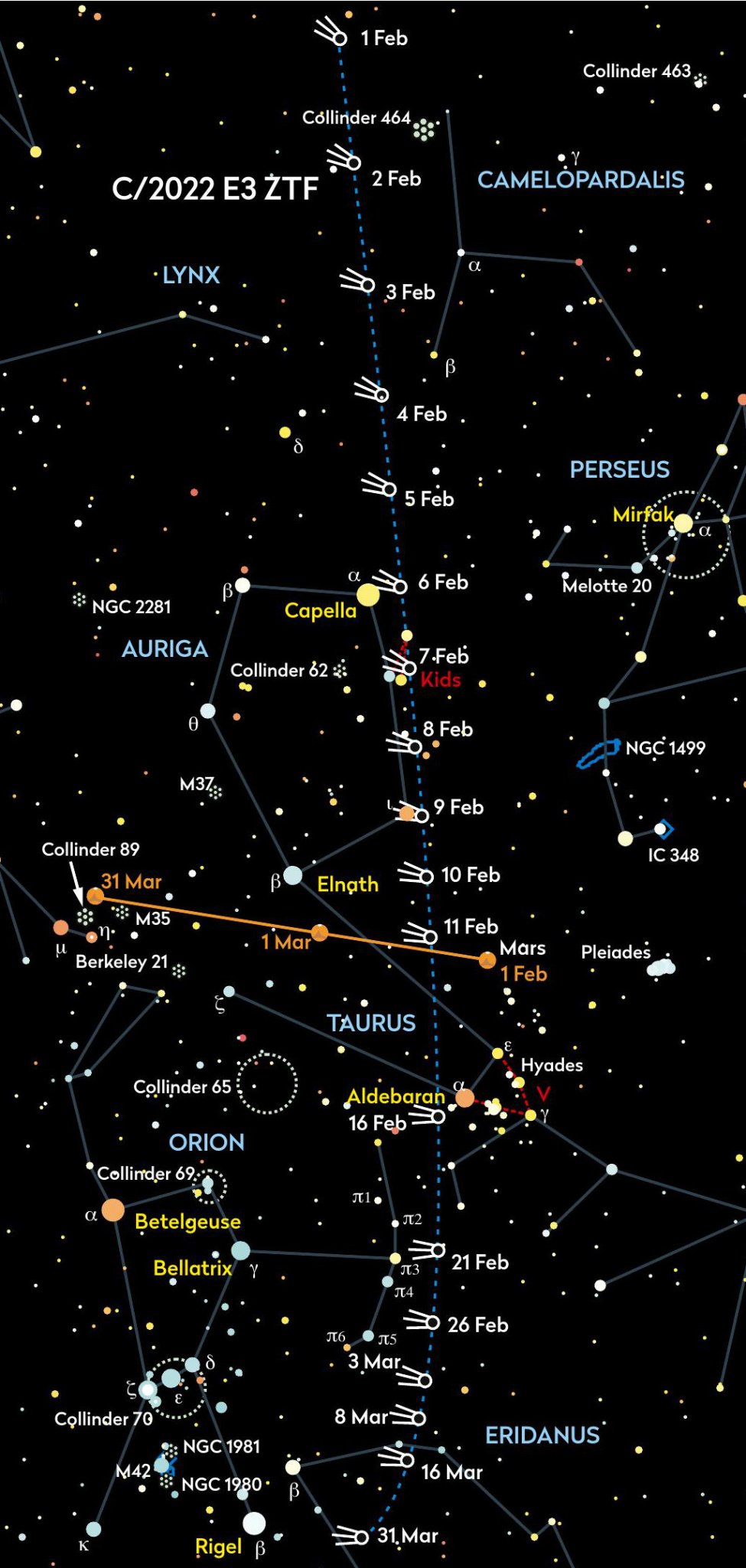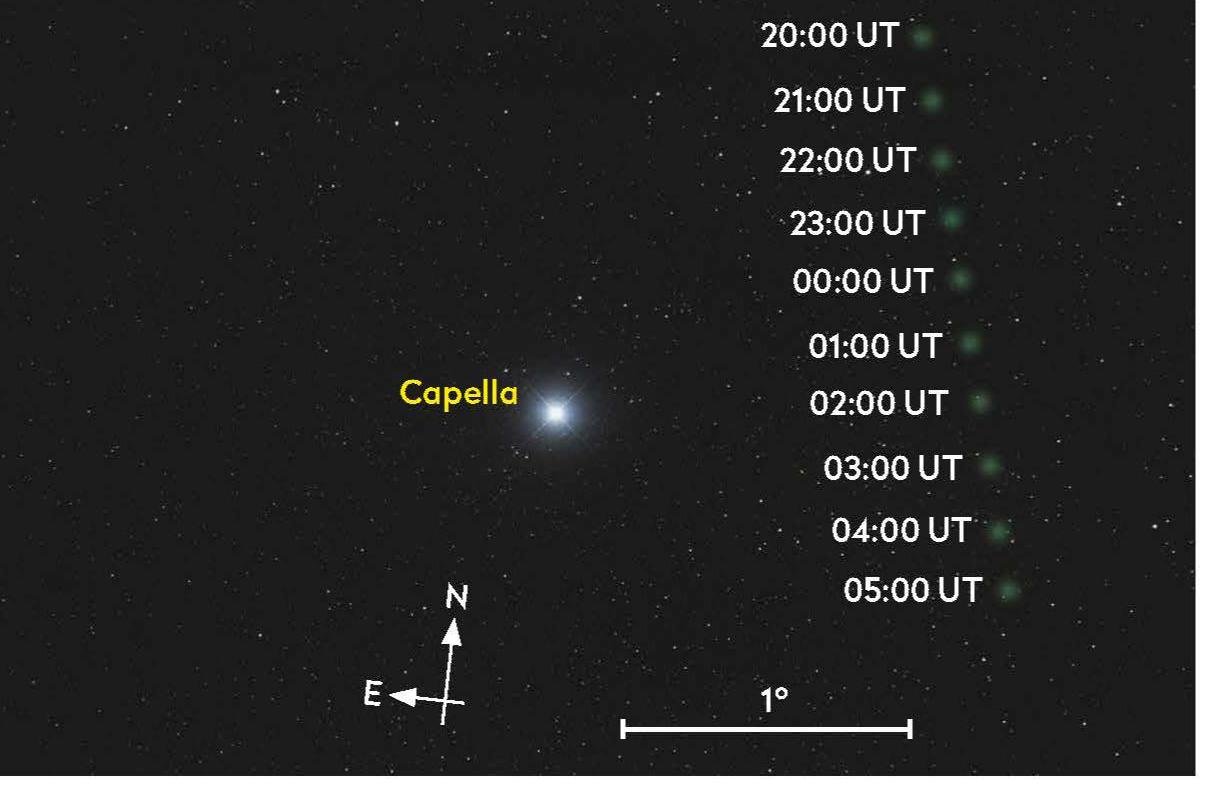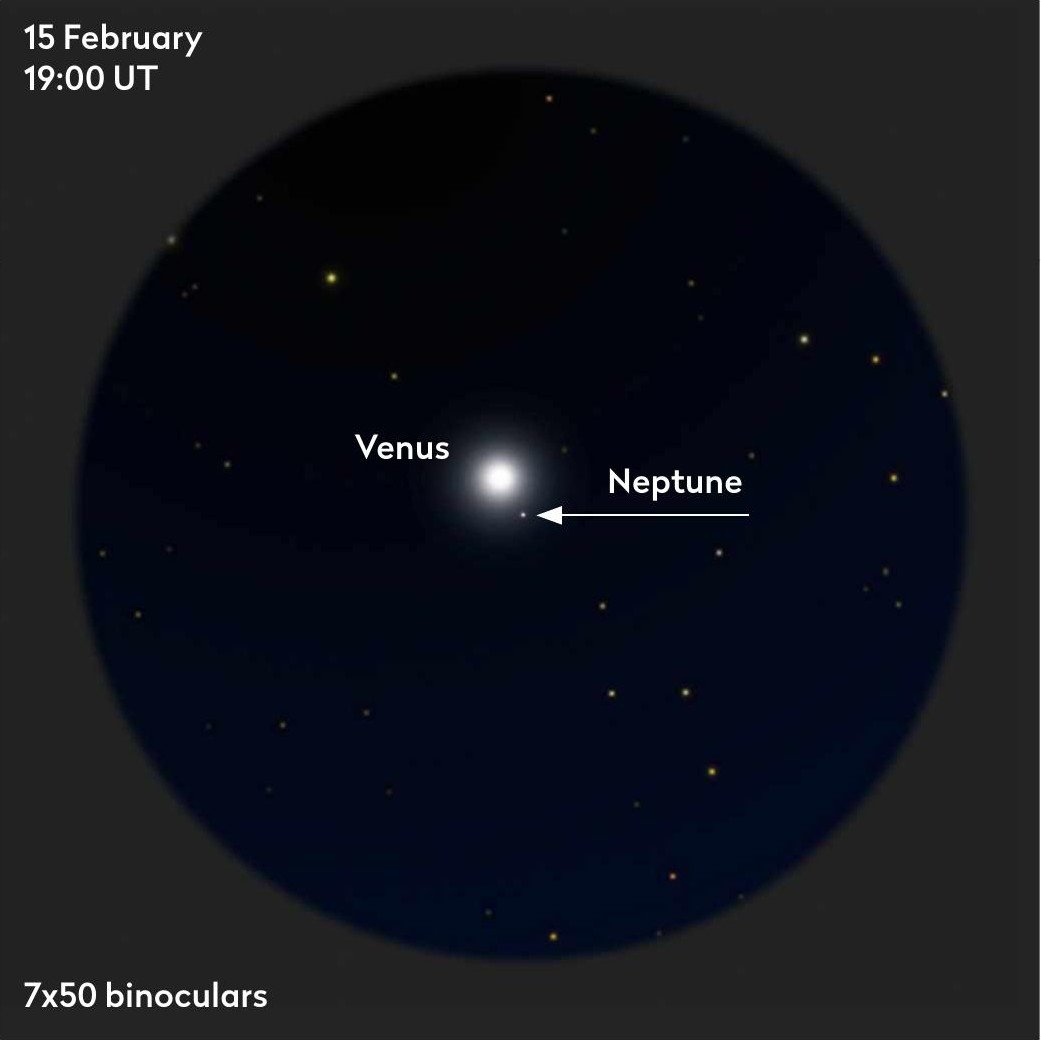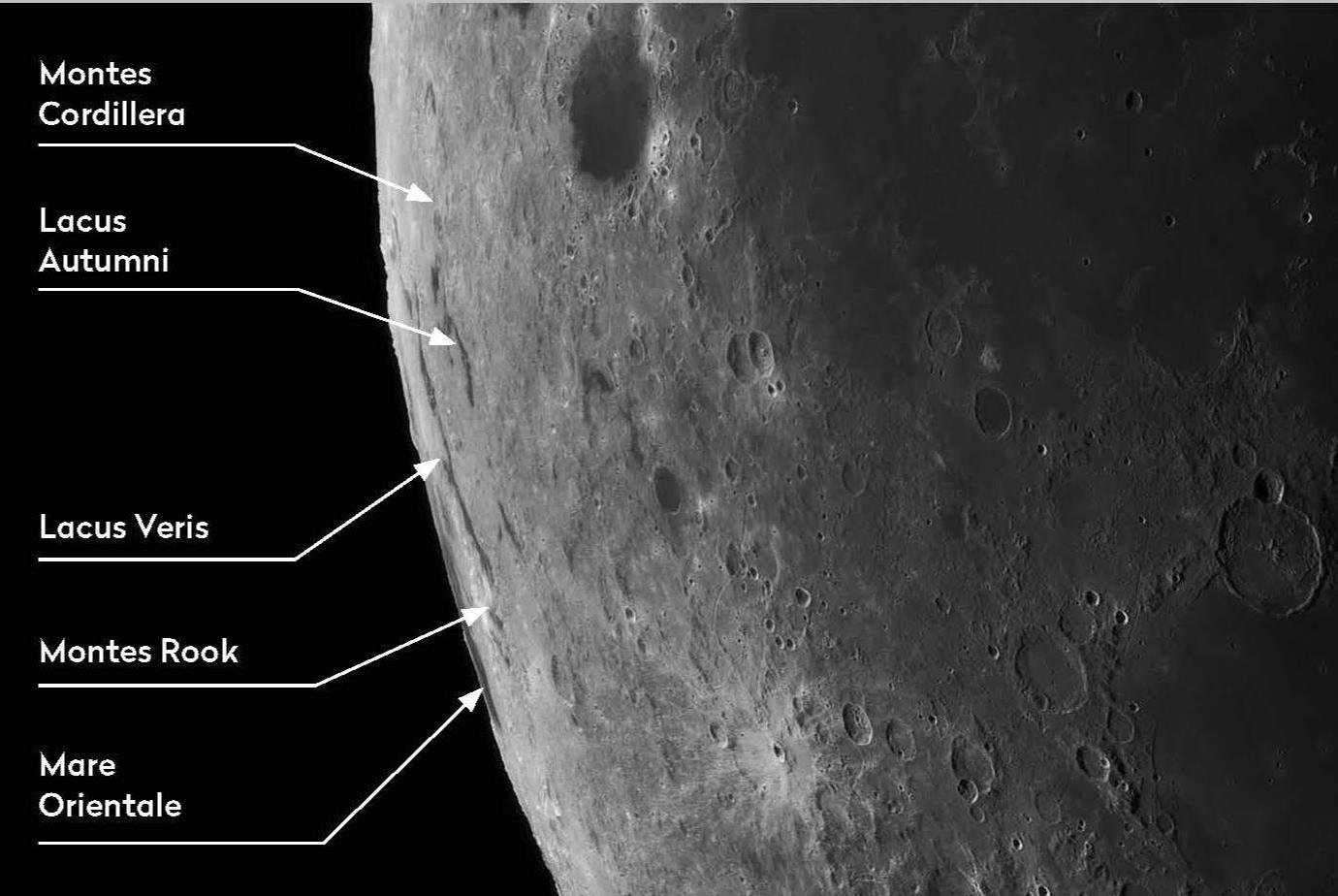The top sights to observe or image this month
DON’T MISS: Comet C/2022 E3 ZTF
BEST TIME TO SEE: 8–23 February
RECOMMENDED EQUIPMENT: Binoculars

Assuming that it continues to follow predictions, comet C/2022 E3 ZTF will be in naked-eye territory this month, and fairly well-placed for viewing from the UK. On 1 February, the comet is located at high declination in the constellation of Camelopardalis, the Giraffe. Not known for strong patterns, the faint stars of Camelopardalis will make finding the mag. +4.8 comet that little bit harder.
At 00:00 UT on 1 February, the comet is located 2° south of mag. +4.6 HIP 33694, the star that marks the top of the giraffe’s head. This star is, in itself, quite tricky to identify. The best we can do is to suggest looking at the point midway between Dubhe (Alpha (α) Ursae Majoris) and Segin (Epsilon (ε) Cassiopeiae). HIP 33694 sits more or less half way between these two brighter and more identifiable stars. At 00:00 UT on 2 February, the comet will have progressed to another ‘main’ star of Camelopardalis, HIP 29997, with C/2022 E3 lying 1° to the north of this mag. +4.8 star on this date.
As it continues on its south-southwest journey, the comet thankfully passes into a region of more identifiable stars within Auriga, the Charioteer. Unfortunately, as it does so it will be slowly beginning to fade. On the night of 5/6 February, C/2022 E3 ZTF is very conveniently positioned 1° west-northwest to west of Capella (Alpha (α) Aurigae). At 03:00 UT on 6 February, the comet is located 1.5° due west of the star and expected to appear at mag. +5.2.

It passes immediately west of the Kids asterism formed by Eta (η) and Zeta (ζ) Aurigae during the morning of 7 February, and lies two-thirds of a degree to the west of Hassaleh (Iota (ι) Aurigae) on the evening of 8 February. Its subsequent track takes it east of Mars. On the night of 10/11 February it lies northeast of the mag. 0.0 planet, and on 11/12 February it can be found to the southeast. This is the time C/2022 E3 ZTF is expected to have an integrated magnitude of +6.0, theoretically moving into binocular territory, although in truth it was probably here for most of the month anyway.
At 00:00 UT on 15 February, the comet sits 1.5° east of Aldebaran (Alpha (α) Tauri), heading south to track just west of the curved line formed from Pi1(π 1) to Pi 6(π 6) Orionis between 18 February through to the start of March. By the time the end of the month has arrived, it is expected to have faded to mag. +8.1.
Venusian encounters
BEST TIME TO SEE: From 15 February, after sunset
RECOMMENDED EQUIPMENT: Binoculars

On the evening of 15 February, the brightest and the dimmest planets in the Solar System have an encounter. As darkness falls, mag. –3.8 Venus and mag. +8.0 Neptune will appear just 20 arcminutes apart, low above the western horizon. Close though this appears, earlier in the day, when Neptune sadly wasn’t visible from the UK, their closest approach at 12:26 UT had them just 47 arcseconds apart!
A more spectacular planetary conjunction comes later in the month and into early March, when Venus will have moved further to the east for an encounter with bright Jupiter.
The first highlights occur on the evenings of 21, 22 and 23 February, when a slender waxing crescent Moon lies close to both planets. On 21 February, in order from the Sun, you will see first a thin 3%-lit waxing crescent Moon, then Venus followed by Jupiter, setting one after the other. On the evening of 22 February, the Moon will have thickened to 8%-illumination, located slightly below the imaginary 7.5° line connecting both planets. Finally, on 23 February, the now 15%-lit Moon sits east of Jupiter, the gap between the gas giant and Venus having closed slightly to 6.5°.
The gap between worlds continues to close and as darkness falls on 27 February, mag. –3.6 Venus appears 2.5° from mag. –1.9 Jupiter, an impressive sight in its own right. Both planets are around 7° up when astronomical darkness falls, and with a clear western horizon, should appear quite stunning. On the following evening, 28 February, the gap closes to just 1.5°.
The narrowest separation occurs on 1 March, when both planets will appear 39 arcminutes apart at 18:45 UT, and 16° up in a darkening twilight sky. On the evening of 2 March, although the separation will have slightly increased, the pair will still look stunning, sitting just 45 arcminutes apart.
Favourable southwest lunar libration
BEST TIME TO SEE: 9–16 February
RECOMMENDED EQUIPMENT: Small/medium telescope

The Moon points the same face towards Earth due to tidal locking. However, its orbit is an ellipse that causes it to appear to speed up or slow down over a lunar month. In addition, the orbit is tilted to Earth’s by around 5°.
Consequently, over a lunar month the Moon appears to rock and roll slightly, a phenomenon known as libration. As this occurs, features on the very edge of the Moon will either be brought into view or rotated out of view.
In the middle of the month, libration favours the southwest limb, bringing a large concentric basin known as Mare Orientale partially into view. Mare Orientale, which ironically means ‘Eastern Sea’ despite being on the western side of the Moon, would be an impressive feature if viewed from above, resembling a giant bull’s eye target on the Moon. Mare Orientale is the dark, central part of the ‘target’. Around it are giant concentric mountain ranges and between these are dark lava lakes.
Extreme foreshortening makes it difficult to fully appreciate the complexity of the feature, but with care it is possible to identify the Cordillera and Rook mountain ranges, as well as a number of dark lava lakes sandwiched between them, such as Lacus Autumni and Lacus Veris.